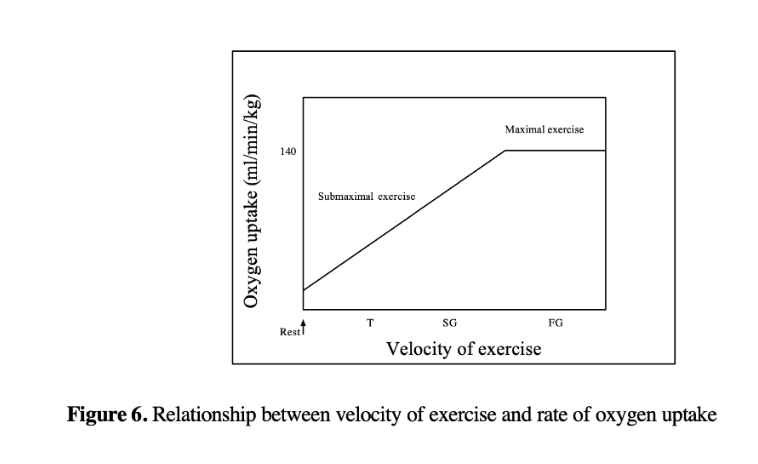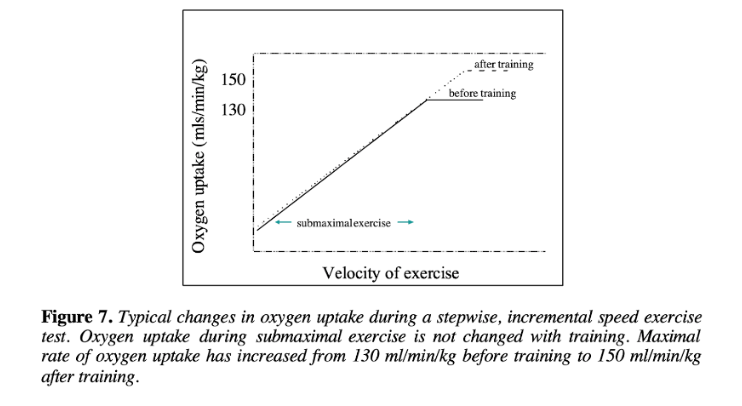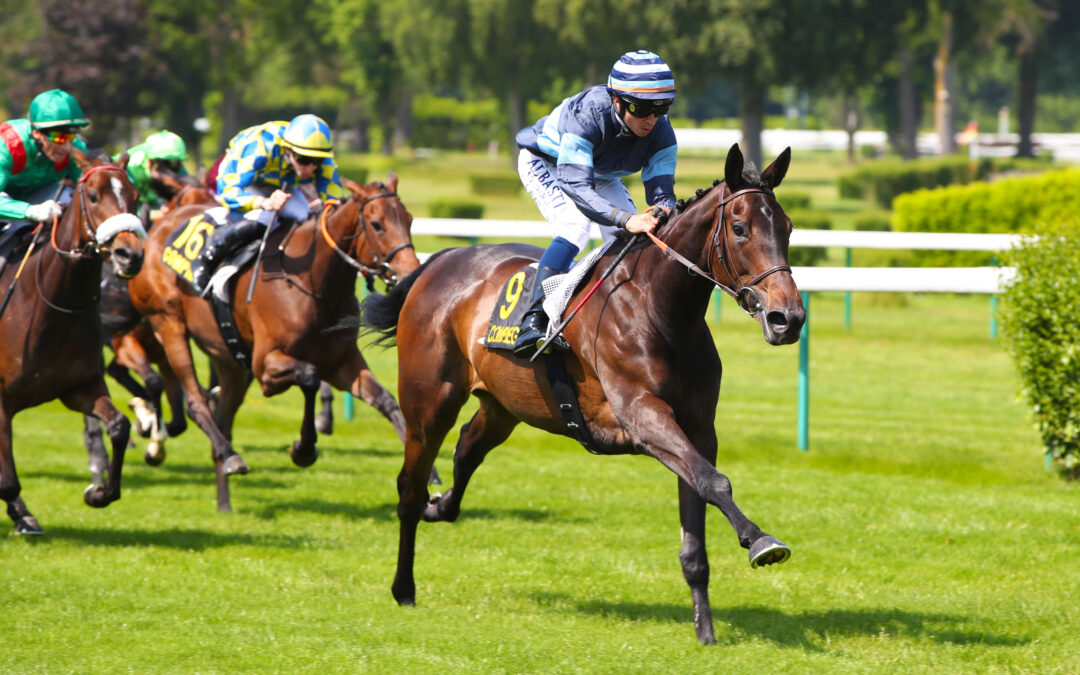Aerobic capacity in a racehorse is described as the usage of oxygen to provide the energy required to sustain the activity. To move, a horse must use a combination of metabolic and biochemical processes to generate energy.
The demand for energy in horses is constant, whether it’s to maintain, perform, or develop muscle. Whatever the effort, the horse needs a transfer of chemical energy to respond to mechanical work. To meet this energy demand, numerous metabolisms are activated, and training can help to strengthen these diverse processes.
How does the racehorse produce energy? What is the role of aerobic metabolism? And how can the horse’s aerobic capacity be improved?
If you are unfamiliar with the concept of energy production in racehorses, we recommend this article before delving deeper into the aerobic work of your horses.
Energy creation in racehorses
Every exercise, whatever its intensity, requires a supply of energy from the adenosine triphosphate molecule, also known as ATP. This molecule is the essential energy component that enables the muscles to respond to the exercise required. It is the source of energy used for muscle contraction and release: without a sufficient supply of ATP energy, the muscle filaments cannot energise properly.
Unfortunately, muscles can only store a limited amount of ATP, limiting their ability to sustain effort for more than a few seconds.
In other words, a horse must be able to re-synthesise ATP quickly in order to sustain its effort for more than a few seconds. Different metabolisms are capable of re-synthesising ATP, and their participation is dependent on the intensity and duration of the effort.
Aerobic metabolism
This is the use of oxygen within the mitochondria to burn ‘fuel’ to produce energy for the synthesis of ATP. Aerobic metabolism consists of burning carbohydrates and lipids thanks to the oxygen present in the mitochondria, allowing efficient use of fat as an energy source. Using fat as a source of energy preserves muscle glycogen reserves, which are essential for intense exercise. Aerobic metabolism therefore makes it possible to meet the energy demands of low-intensity exercise.
It produces good results (the total energy produced is much greater than that produced by anaerobic metabolism), but its rate of energy production is extremely slow compared with anaerobic metabolism. It is the main source of energy for endurance and low-intensity work.
Factors influencing the aerobic capacity of racehorses
The horse’s ability to generate energy aerobically is primarily limited by the availability of oxygen in the working muscles. Potential limitations include the function of the upper airways, lungs and cardiovascular system, as well as the concentration of haemoglobin in the blood. Training helps to improve the oxygen supply to the muscle, which increases the animal’s capacity to generate aerobic energy.
The maximum volume of oxygen (VO2max) consumed by the horse during physical exercise can thus be used to define its aerobic capacity. This is the maximum amount of oxygen that a horse’s lungs can transport, which is then utilised by the heart and supplied to the muscles for energy production.
Improving VO2max
The maximal aerobic power that an athlete can sustain is estimated by VO2 max. After a horse has trained, the maximal volume of oxygen increases by about 10-20%. Maximum oxygen absorption is primarily influenced by two factors: cardiac output, or the ability to transport oxygen to the muscles, and the ability of the muscles to use oxygen for energy production, which is heavily dependent on mitochondrial density and function.


Here is some information we can glean from various scientific studies on VO2max.
- The study proposed by Hiraga and All (1997) indicated that an increase in the intensity and duration of training over a period of 8 weeks resulted in a 7% increase in VO2max in 2-year-old thoroughbreds at the start of their training.
- Knight et all (1991) demonstrated in their study that significant increases in VO2max were observed during the first two weeks of the training period. These results indicate that even low-intensity exercise can have an effect on cardiopulmonary function during the early stages of training.
Influencing the mitochondria
The mitochondria consume around 80% of the oxygen inspired in order to satisfy the body’s metabolic demand. These cells are therefore a key factor in determining how the muscles use oxygen. In other words, they have a major influence on aerobic performance.
Adaptation of the mitochondria is mainly the result of a period of endurance-type training. The duration of exercise has been identified as an important factor in their development.
How to work the aerobic capacity of horses?
When we train a horse in an aerobic zone, the changes we aim to induce are as follows:
- Increase in the number and size of mitochondria
- Improved use of muscle glycogen as an energy source
- Increase in muscle glycogen reserves
- Improved muscle capacity to use oxygen
Several factors need to be worked on to improve the aerobic capacity of racehorses. Studies have shown that working at a minimum of 60% of a horse’s VO2max for a period of 10 weeks had the effect of improving mitochondrial adaptation.
There are not yet enough studies on the subject of aerobic capacity improvement, and those that do exist do not use a representative sample of the Thoroughbred population to be able to draw any general conclusions.
However, we can still highlight some of the main known training principles.
Endurance training
It includes long and slow exercises that improve cardio-respiratory and biomechanical efficiency. In general, these exercises are performed at around 60% of a horse’s maximum heart rate. Endurance exercise uses type I muscle fibres. These have a high capacity to consume oxygen (we call it an “aerobic” effort because it uses oxygen). They are thus recruited by the horse’s body for tasks such as walking or endurance.
Improving aerobic capacity
These exercises are used to improve the body’s oxygenation during exercise. This involves working at sufficiently high speeds to approach the anaerobic threshold without reaching or exceeding it. This work involves another type of muscle fibre, the IIa type. They are intermediate because they contract rapidly but are fairly sparing of glycogen (good aerobic metabolism). They burn carbohydrates almost completely, without accumulating lactic acid.
To know: glycogen (or glucose) produces energy aerobically twice as quickly as lipids. It is generally used when speed increases. The energy output of aerobic-alactic fibres is excellent: they are therefore mobilised for prolonged intense efforts, such as sprinting.
Conclusion
Aerobic capacity, which is the body’s ability to use oxygen efficiently during exercise, plays a crucial role in the continuous supply of energy to the muscles during racing.
Training is critical for strengthening racehorse aerobic capacity. Individualised training on a regular basis can improve cardiorespiratory adaptability, muscle efficiency, and the ability to supply oxygen to tissues. Racehorses with a higher aerobic capacity generally have better endurance and greater resistance to fatigue: they are able to maintain a sustained effort over long distances.
A horse’s aerobic capacity can be assessed using a variety of tests, such as exercise tests at work or on a treadmill. These tests measure oxygen consumption and heart rate, providing valuable information.
SOURCES :
Knight, P.K., Sinha, A.K. and Rose, R.J. (1991) Effects of training intensity on maximum oxygen uptake. In: Equine Exercise Physiology 3, Eds: S.G.B. Persson, A. Lindholm and L. Jeffcott, K E E P Publications, Davis. pp 77-82.
HIRAGA, A., KAI, M., KUBO, K., & SUGANO, S. (1997). The Effect of Training Intensity on Cardiopulmonary Function in 2 Year-Old Thoroughbred Horses. Journal Of Equine Science, 8(3), 75-80. doi: 10.1294/jes.8.75
Keywords: aerobic capacity, metabolism, ATP, cardiac output, etc.
Photo credit: @Scoopdyga

